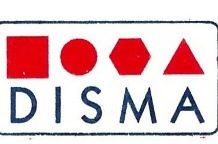New Delhi, July 23, 2019: According to a recent study, the sales of incontinence products are estimated to reach ~8 billion units in 2019. Incontinence products market will continue to remain rife with opportunities, with demand primarily driven by aging demographic, burgeoning consumer education, rising awareness about product availability, and a progressing shift away from tabooing of incontinence problems. Sales of incontinence products will remain highly influenced by the growing health and wellness trend, says the report.
Increasing incidences of incontinence caused by myriad contributing factors, such as, age, obesity, child birth, PTSD, and prostate surgeries are driving the demand for novel approaches for incontinence products development. Demographic and health determinants, coupled with growing understanding of incontinence condition, product normalization, and development of more product formats to address wearer-specific needs and conditions continue to promise higher gains in the incontinence products market.
Increasing awareness about novel incontinence products, such as new wears that are more comfortable and discreet are upholding gains in market. The two-fold growth in the development of products that are based on customer ‘feel good’ factor is reinforcing the opportunistic potential of the market, which the study indicates is estimated to witness ~4% Y-o-Y growth in 2019 over 2018. The market is likely to witness considerable penetration of incontinence products in gender specific designs compiled with colorful and soft inner as well as outer sheets.
The study opines that disposable pads and liners will represent ~33% demand share in 2019, however, currently high in demand incontinence products for females are likely to be overtaken by products for males through 2029. As advertising continues to largely normalize incontinence as a standard retail product, manufacturers are widening their product portfolio to capitalize the potential spike in the demand for incontinence products in the years to come.
As per the report findings, though incontinence products market is witnessing considerable traction for super absorbents, which contributed sales of ~2 Bn units in 2018, cotton fabrics based variants are likely to account for significant sales through 2029. The use of light incontinence disposable pads and liners and moderate/heavy disposable protective underwear will grow significantly in developed as well as developing countries in the forthcoming years.
Gender-Specific Products and Packaging Designs Becoming Prevalent
According to the study, incontinence products manufacturers are leveraging novel packaging styles with vibrant colors and design graphics to completely lift the dampening stigma around the condition. As the previous institutional-style image of incontinence products has already started losing grip on product sales, stakeholders are harnessing the power of customer-appealing designs to unlock higher gains in the market. The study points towards greater prevalence of gender-specific development and packaging of incontinence products and sales through 2029.
As per the study, while the manufacturers are reformulating their product developing strategies, they are projected to place their focus on the development of organic incontinence products. This shift from conventional to organic incontinence products is likely to pick pace in the forthcoming years. The study indicates that organic incontinence products currently account for a fourth of total sales, and envisages organic variants to outpace conventional counterparts over the course of next decade, in terms of rate of adoption.
Expanding elderly population in developing regions, burgeoning consumer awareness and growing acceptance about incontinence and related conditions, are fueling the growth of incontinence products market. The report suggests that increasing investments in product innovations in sync with the ‘personalization’ trend will be an instrumental move in favor Several market players are strengthening presence in Asia Pacific, owing to rising prospective consumer incomes, growing understanding of urinary incontinence and products that are aimed at addressing the condition, to reinforce foothold in the market. However, the study also mentions that, while developing regions are witnessing rise in incomes, there remains a notable proportion of the population in low income brackets that currently can’t afford supplies of incontinence products.
This study presents a long-term outlook of the incontinence products market for the time frame 2019 to 2029. The incontinence products market is envisaged to register a volume CAGR of ~5% through 2029.
These insights are based on a report on Incontinence Products Market by Fact.MR
Corporate Comm India (CCI Newswire)
































